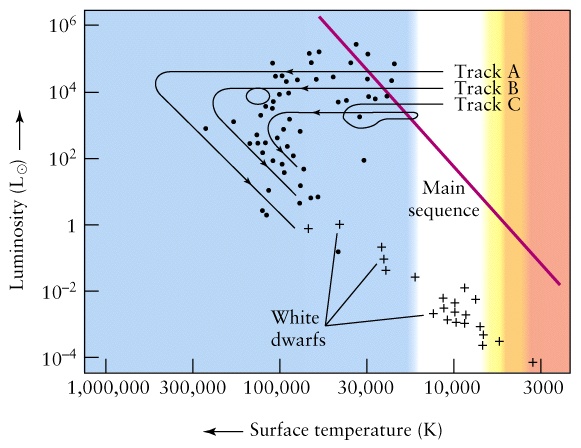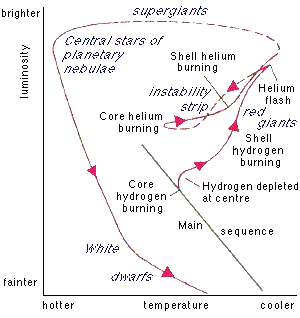Page 1 of 1
ESO: Stunning Space Butterfly (NGC 2899)
Posted: Thu Jul 30, 2020 3:44 pm
by bystander
Stunning Space Butterfly Captured
ESO Photo Release | 2020 Jul 30
Resembling a butterfly with its symmetrical structure, beautiful colours, and intricate patterns, this striking bubble of gas — known as NGC 2899 — appears to float and flutter across the sky in this new picture from ESO’s Very Large Telescope (VLT). This object has never before been imaged in such striking detail, with even the faint outer edges of the planetary nebula glowing over the background stars.
NGC 2899’s vast swathes of gas extend up to a maximum of two light-years from its centre, glowing brightly in front of the stars of the Milky Way as the gas reaches temperatures upwards of ten thousand degrees. The high temperatures are due to the large amount of radiation from the nebula’s parent star, which causes the hydrogen gas in the nebula to glow in a reddish halo around the oxygen gas, in blue.
This object, located between 3000 and 6500 light-years away in the Southern constellation of
Vela (The Sails), has two central stars, which are believed to give it its nearly symmetric appearance. After one star reached the end of its life and cast off its outer layers, the other star now interferes with the flow of gas, forming the two-lobed shape seen here. Only about 10–20% of
planetary nebulae display this type of
bipolar shape. ...
Re: ESO: Stunning Space Butterfly (NGC 2899)
Posted: Thu Jul 30, 2020 4:50 pm
by BDanielMayfield
First, this really is a stunning image. It needs to be an APOD.
Second point, the distance estimate range of 3000 to 6500 light-years is huge. Can't a much better distance be known via GAIA data? Poor distance estimates for objects in our sector of the MW is frustrating this long into GAIA's mission.
Re: ESO: Stunning Space Butterfly (NGC 2899)
Posted: Thu Jul 30, 2020 8:49 pm
by neufer
BDanielMayfield wrote: ↑Thu Jul 30, 2020 4:50 pm
Second point, the distance estimate range of 3000 to 6500 light-years is huge. Can't a much better distance be known via GAIA data? Poor distance estimates for objects in our sector of the MW is frustrating this long into GAIA's mission.
- The Gaia targets objects brighter than magnitude 20.
White dwarfs have an absolute magnitude (magnitude at 32.6 light-years) between 10 and 15.
Ergo: the brightest white dwarfs have to be closer than 3260 light-years to register with Gaia.
Re: ESO: Stunning Space Butterfly (NGC 2899)
Posted: Thu Jul 30, 2020 11:25 pm
by BDanielMayfield
neufer wrote: ↑Thu Jul 30, 2020 8:49 pm
BDanielMayfield wrote: ↑Thu Jul 30, 2020 4:50 pm
Second point, the distance estimate range of 3000 to 6500 light-years is huge. Can't a much better distance be known via GAIA data? Poor distance estimates for objects in our sector of the MW is frustrating this long into GAIA's mission.
- The Gaia targets objects brighter than magnitude 20.
White dwarfs have an absolute magnitude (magnitude at 32.6 light-years) between 10 and 15.
Ergo: the brightest white dwarfs have to be closer than 3260 light-years to register with Gaia.
Thanks. But even so, there should be other stars in GAIA's billion + data set that will be in the PN's foreground and background. If it is possible to tell between these possibilities from stellar spectra then the uncertainty can be narrowed indirectly.
Re: ESO: Stunning Space Butterfly (NGC 2899)
Posted: Fri Jul 31, 2020 2:11 am
by neufer
neufer wrote: ↑Thu Jul 30, 2020 8:49 pm
BDanielMayfield wrote: ↑Thu Jul 30, 2020 4:50 pm
Second point, the distance estimate range of 3000 to 6500 light-years is huge. Can't a much better distance be known via GAIA data? Poor distance estimates for objects in our sector of the MW is frustrating this long into GAIA's mission.
- The Gaia targets objects brighter than magnitude 20.
White dwarfs have an absolute magnitude (magnitude at 32.6 light-years) between 10 and 15.
Ergo: the brightest white dwarfs have to be closer than 3260 light-years to register with Gaia.
BDanielMayfield wrote: ↑Thu Jul 30, 2020 11:25 pm
Thanks. But even so, there should be other stars in GAIA's billion + data set that will be in the PN's foreground and background. If it is possible to tell between these possibilities from stellar spectra then the uncertainty can be narrowed indirectly.
- How would one tell which are the PN's foreground & background stars

Re: ESO: Stunning Space Butterfly (NGC 2899)
Posted: Fri Jul 31, 2020 4:37 am
by BDanielMayfield
neufer wrote: ↑Fri Jul 31, 2020 2:11 am
BDanielMayfield wrote: ↑Thu Jul 30, 2020 4:50 pm
Thanks. But even so, there should be other stars in GAIA's billion + data set that will be in the PN's foreground and background. If it is possible to tell between these possibilities from stellar spectra then the uncertainty can be narrowed indirectly.
- How would one tell which are the PN's foreground & background stars

Spectra of background stars might show lines from nebula material, whereas foreground stars would not. Granted, GAIA's spectrography may not be fine enough, but ground based telescopes could be.
Re: ESO: Stunning Space Butterfly (NGC 2899)
Posted: Fri Jul 31, 2020 6:43 am
by Ann
neufer wrote: ↑Thu Jul 30, 2020 8:49 pm
BDanielMayfield wrote: ↑Thu Jul 30, 2020 4:50 pm
Second point, the distance estimate range of 3000 to 6500 light-years is huge. Can't a much better distance be known via GAIA data? Poor distance estimates for objects in our sector of the MW is frustrating this long into GAIA's mission.
- The Gaia targets objects brighter than magnitude 20.
White dwarfs have an absolute magnitude (magnitude at 32.6 light-years) between 10 and 15.
Ergo: the brightest white dwarfs have to be closer than 3260 light-years to register with Gaia.
White dwarfs are born hot and luminous. The figure at left from
ualberta.ca suggests that the light of a central star of a planetary nebula can be a thousand times brighter than the Sun or more. The figure at right from
Science, civilization and society brings home the message of the luminosity of central stars of planetary nebulas even more.
Admittedly it is a problem that the brightness of the planetary nebula itself might interfere with the light from the central star and possibly make it harder for Gaia to measure its parallax.
On the other hand, NGC 2899 is clearly a sufficiently mature planetary nebula for the central star to have blown a cavity of very rarefied gas around itself, thus taking care of the problem of dense gas interfering with the light from the star. Indeed, ESO's image of NGC 2899 does seem to show a small and very blue star near the center of the nebula. I suppose that if ESO can detect the light of this planetary's central star, Gaia should be able to do it as well.
So it might be possible for Gaia to measure the parallax of the central star of this planetary nebula after all.
Ann
Re: ESO: Stunning Space Butterfly (NGC 2899)
Posted: Fri Jul 31, 2020 2:26 pm
by neufer
Ann wrote: ↑Fri Jul 31, 2020 6:43 am
neufer wrote: ↑Thu Jul 30, 2020 8:49 pm
BDanielMayfield wrote: ↑Thu Jul 30, 2020 4:50 pm
Second point, the distance estimate range of 3000 to 6500 light-years is huge. Can't a much better distance be known via GAIA data? Poor distance estimates for objects in our sector of the MW is frustrating this long into GAIA's mission.
- The Gaia targets objects brighter than magnitude 20.
White dwarfs have an absolute magnitude (magnitude at 32.6 light-years) between 10 and 15.
Ergo: the brightest white dwarfs have to be closer than 3260 light-years to register with Gaia.
ESO's image of NGC 2899 does seem to show a small and very blue star near the center of the nebula. I suppose that if ESO can detect the light of this planetary's central star, Gaia should be able to do it as well. So it might be possible for Gaia to measure the parallax of the central star of this planetary nebula after all.
https://www.eso.org/public/teles-instr/paranal-observatory/vlt/ wrote:
The Very Large Telescope array (VLT) is the flagship facility for European ground-based astronomy at the beginning of the third Millennium. [With each 8.2m diameter Unit Telescope], images of celestial objects
as faint as magnitude 30 can be obtained in a one-hour exposure.



